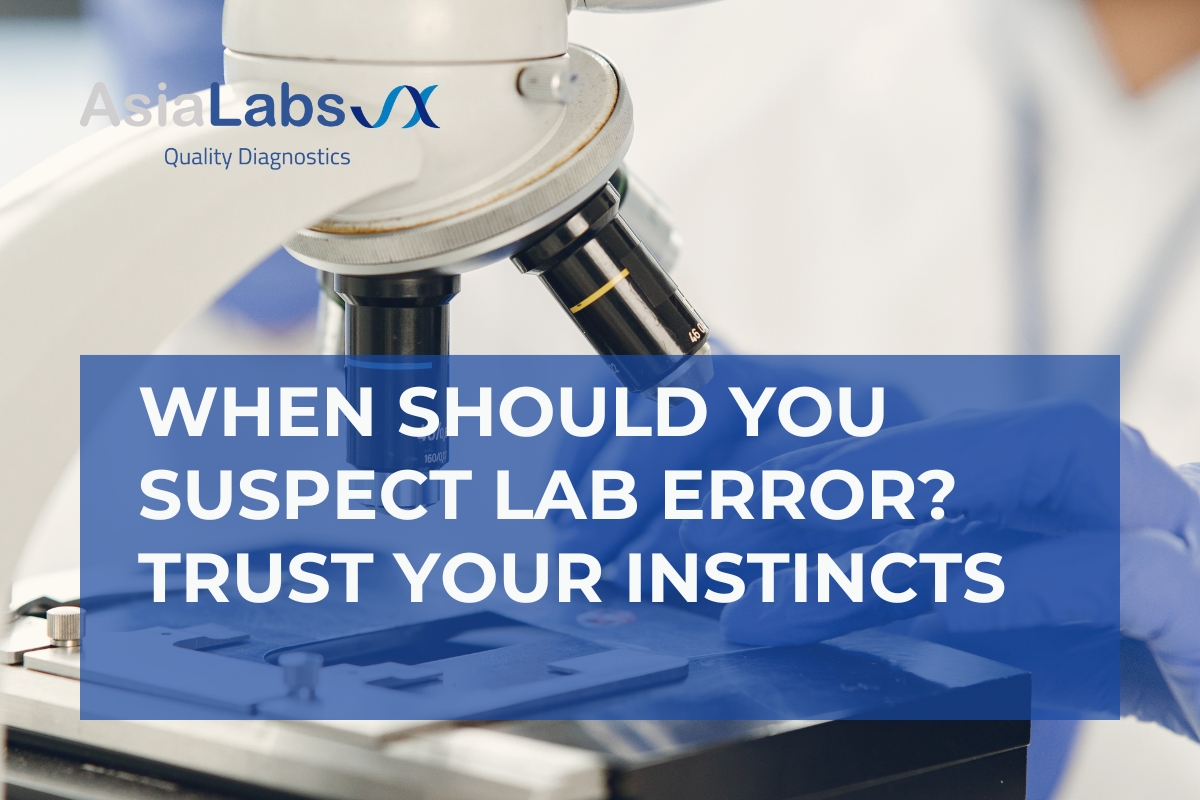Every clinician, at some point in their career, has stared at a lab report and thought, “This doesn’t add up.” Maybe the numbers don’t fit the patient’s symptoms. Maybe a value is wildly out of range, or a trend suddenly reverses without explanation. In these moments, it’s natural—and wise—to pause and ask: Could this be a lab error?
Laboratory testing is a cornerstone of modern medicine, guiding everything from diagnosis to treatment and monitoring. Yet, no system is infallible. Even with the best technology, highly trained staff, and rigorous protocols, errors can occur. The key for clinicians is not to blindly accept every number, but to trust their clinical instincts and know when to question the data.
Why Lab Errors Happen
Laboratory errors are rare, but they do happen. They can occur at any stage of the testing process:
-
Pre-analytical: Issues before the sample reaches the lab, such as improper collection, labeling mistakes, or delays in transport.
-
Analytical: Problems during the actual testing, like instrument malfunction, reagent issues, or technical errors.
-
Post-analytical: Mistakes in reporting, data entry, or interpretation.
Some errors are obvious—a sample that’s visibly hemolyzed (red-tinged from broken blood cells), lipemic (milky from excess fats), or clotted. Others are more subtle, such as a potassium level that’s inexplicably high in a patient with no symptoms, or a liver enzyme spike that doesn’t match the clinical picture.
The Importance of Clinical Correlation
Lab results are powerful—but only when interpreted in context. The best clinicians know that numbers must always be weighed against the patient’s history, symptoms, and physical findings. If something doesn’t fit, it’s not just acceptable to question the result—it’s essential.
For example:
-
A patient with no risk factors for diabetes suddenly shows a sky-high blood glucose.
-
A stable, well-managed patient with chronic kidney disease has a creatinine that jumps dramatically overnight.
-
A child with no signs of infection returns a white blood cell count in the tens of thousands.
In each case, the first step is to consider the clinical context. Could the result be real? Or is there a plausible explanation for error?
Safeguards at AsiaLabs: Transparency and Quality Control
At AsiaLabs, we understand how much clinicians rely on our data—and how much is at stake if something goes wrong. That’s why every test result is backed by robust internal quality control (QC) systems, and why we believe in full transparency.
Here’s how we protect clinical integrity:
-
Flagging Pre-analytical Issues: If a sample shows hemolysis, lipemia, or clotting, we disclose this clearly in the report. These factors can distort results for tests like potassium, liver enzymes, and cholesterol.
-
Monitoring Sample Timing and Transport: Samples that are delayed, exposed to improper temperatures, or otherwise compromised are flagged, and clinicians are notified that results may be unreliable.
-
Identifying Outliers: Our systems automatically flag results that deviate significantly from expected physiology or from the patient’s previous trends. These outliers prompt a review before the report is finalized.
-
Open Communication: If you have concerns about a result, you can request retesting or direct consultation with our laboratory team. We welcome these discussions—not as criticism, but as a partnership for patient safety.
When to Suspect Lab Error
While most results are accurate, certain red flags should prompt a closer look:
-
Results that are inconsistent with the clinical picture: If the lab data doesn’t match your expectations or the patient’s symptoms, consider the possibility of error.
-
Sudden, unexplained changes: Dramatic shifts in lab values without a clear clinical cause warrant investigation.
-
Isolated outliers: One abnormal result in a panel of otherwise normal values can be a clue.
-
Known sample issues: Reports that mention hemolysis, lipemia, clotting, or delayed processing.
What to Do When You Suspect an Error
-
Review the Report Carefully: Look for any notes about sample quality, timing, or transport.
-
Correlate with Clinical Findings: Does the result make sense in context? Is there any plausible explanation for the abnormality?
-
Contact the Lab: Don’t hesitate to call AsiaLabs for clarification, retesting, or a technical consult. Our team is here to support you.
-
Consider a Repeat Test: If in doubt, a repeat sample can often resolve the question.
Protecting Patient Trust
Questioning a lab result isn’t about blaming the laboratory. It’s about protecting your patient, maintaining clinical integrity, and upholding the trust that is central to the doctor-patient relationship. At AsiaLabs, we see ourselves as your partners in care—committed to transparency, accuracy, and open communication.
Conclusion: Confidence Through Collaboration
In medicine, trusting your instincts is as important as trusting the data. When the numbers don’t fit, don’t ignore your doubts. With AsiaLabs, you have a laboratory partner that values transparency and welcomes your questions. Together, we can ensure that every decision is based on the best possible information—so you can act with confidence, and your patients can trust in their care.

